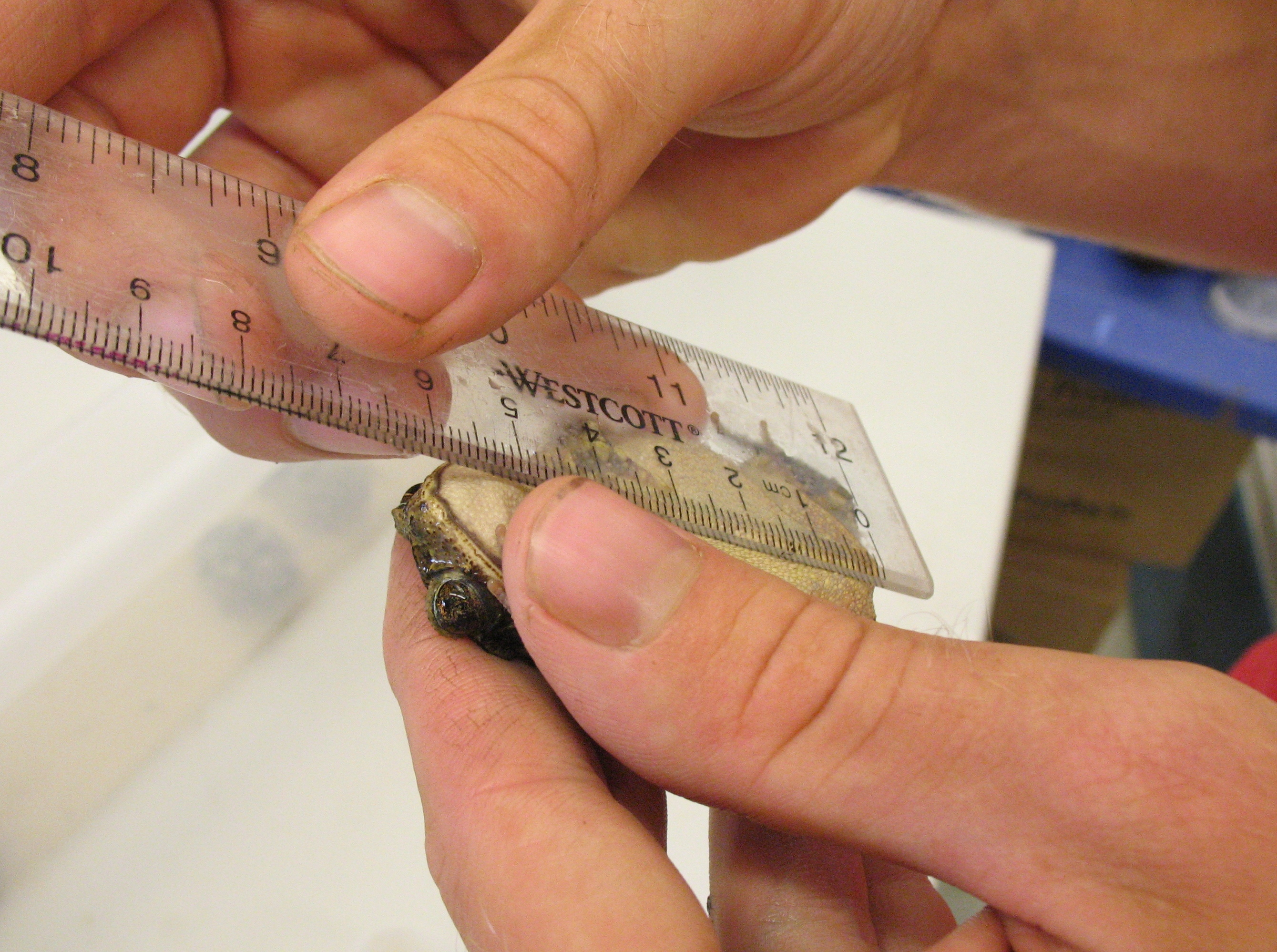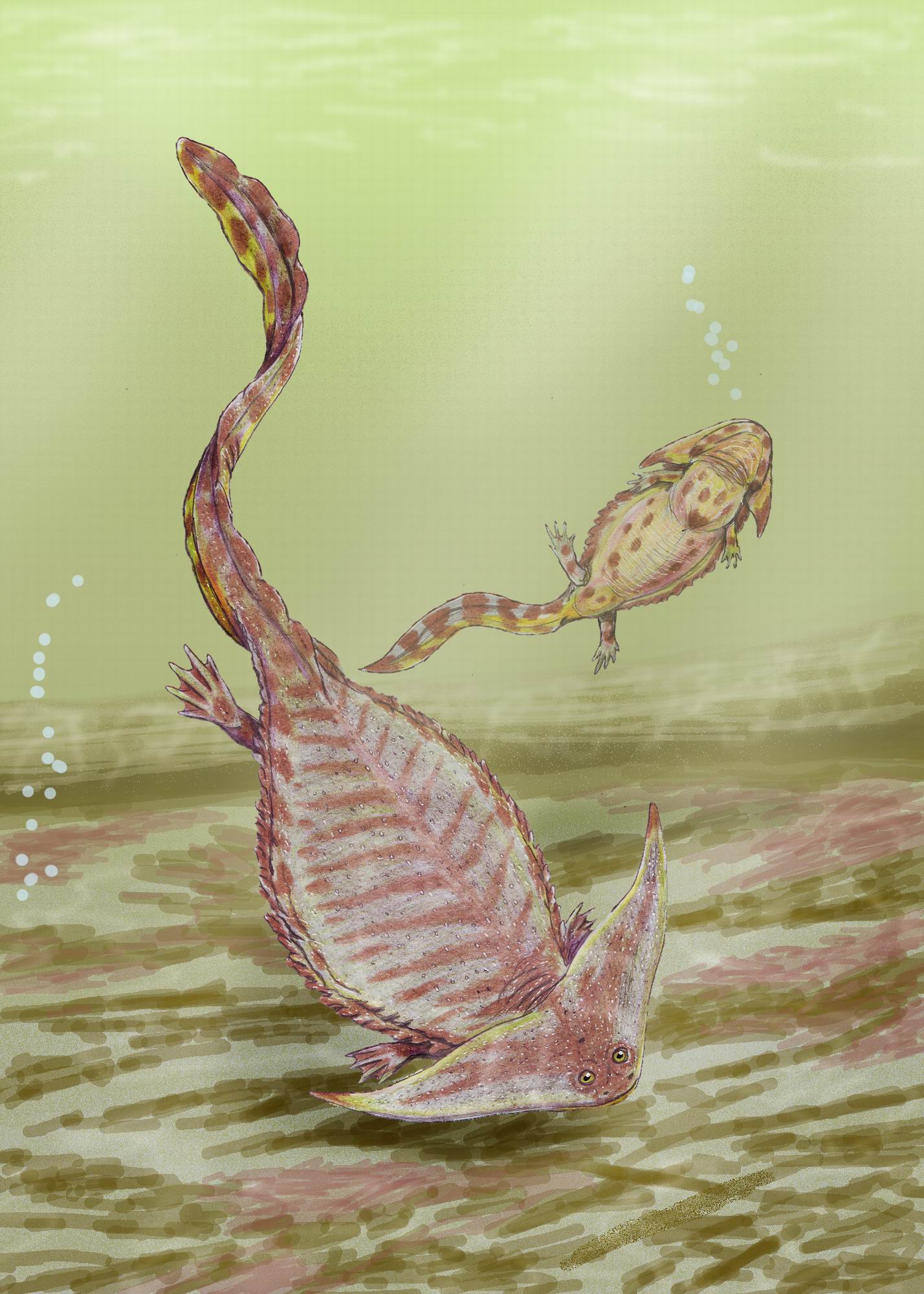|
Atelopus Lynchi
''Atelopus lynchi'', also known as Lynch's stubfoot toad or Lynch's harlequin frog, is a species of toad in the family Bufonidae. It occurs in northern Ecuador (Carchi) and in southern Colombia ( Nariño, Cauca, and possibly Valle del Cauca Department, the last one is in doubt). It occurs on the Pacific slope of the Cordillera Occidental, as the westernmost ranges of the Andes are known in both Colombia and in Ecuador. Prior to its description, it was confused with ''Atelopus longirostris''. Etymology The specific name ''lynchi'' honors John D. Lynch, an American herpetologist and the collector of the holotype. Description Adult males measure and adult females about in snout–vent length. The head is longer than it is wide and is narrower than the body. The snout is long and protruding. No tympanum is present. The fingers have basal webbing, but no fringes. The toes are webbed. The digits have distinct pads. The coloration is rather undistinguished (in contrast to its ofte ... [...More Info...] [...Related Items...] OR: [Wikipedia] [Google] [Baidu] [Amazon] |
Toad
Toad (also known as a hoptoad) is a common name for certain frogs, especially of the family Bufonidae, that are characterized by dry, leathery skin, short legs, and large bumps covering the parotoid glands. In popular culture (folk taxonomy), toads are distinguished from frogs by their drier, rougher skin and association with more terrestrial habitats. However, this distinction does not align precisely with scientific taxonomy. List of toad families In scientific taxonomy, toads include the true toads (Bufonidae) and various other terrestrial or warty-skinned frogs. Non-bufonid "toads" can be found in the families: * Bombinatoridae ( fire-bellied toads and jungle toads) * Calyptocephalellidae ( helmeted water toad and false toads) * Discoglossidae ( midwife toads) * Myobatrachidae (Australian toadlets) * Pelobatidae ( European spadefoot toad) * Rhinophrynidae ( burrowing toads) * Scaphiopodidae ( American spadefoot toads) * Microhylidae ( narrowmouth toads) ... [...More Info...] [...Related Items...] OR: [Wikipedia] [Google] [Baidu] [Amazon] |
Snout–vent Length
Snout–vent length (SVL) is a morphometric measurement taken in herpetology from the tip of the snout to the most posterior opening of the cloacal slit (vent)."direct line distance from tip of snout to posterior margin of vent" It is the most common measurement taken in herpetology, being used for all amphibians, lepidosaurs, and crocodilia Crocodilia () is an order of semiaquatic, predatory reptiles that are known as crocodilians. They first appeared during the Late Cretaceous and are the closest living relatives of birds. Crocodilians are a type of crocodylomorph pseudosuchia ...ns (for turtles, carapace length (CL) and plastral length (PL) are used instead). The SVL differs depending on whether the animal is struggling or relaxed (if alive), or various other factors if it is a preserved specimen. For fossils, an osteological correlate such as precaudal length must be used. When combined with weight and body condition, SVL can help deduce age and sex. Advantag ... [...More Info...] [...Related Items...] OR: [Wikipedia] [Google] [Baidu] [Amazon] |
Amphibians Described In 1981
Amphibians are ectothermic, anamniotic, four-limbed vertebrate animals that constitute the class Amphibia. In its broadest sense, it is a paraphyletic group encompassing all tetrapods, but excluding the amniotes (tetrapods with an amniotic membrane, such as modern reptiles, birds and mammals). All extant (living) amphibians belong to the monophyletic subclass Lissamphibia, with three living orders: Anura (frogs and toads), Urodela (salamanders), and Gymnophiona (caecilians). Evolved to be mostly semiaquatic, amphibians have adapted to inhabit a wide variety of habitats, with most species living in freshwater, wetland or terrestrial ecosystems (such as riparian woodland, fossorial and even arboreal habitats). Their life cycle typically starts out as aquatic larvae with gills known as tadpoles, but some species have developed behavioural adaptations to bypass this. Young amphibians generally undergo metamorphosis from an aquatic larval form with gills to an air-breathing a ... [...More Info...] [...Related Items...] OR: [Wikipedia] [Google] [Baidu] [Amazon] |
Amphibians Of Ecuador
Amphibians are ectothermic, anamniote, anamniotic, tetrapod, four-limbed vertebrate animals that constitute the class (biology), class Amphibia. In its broadest sense, it is a paraphyletic group encompassing all Tetrapod, tetrapods, but excluding the amniotes (tetrapods with an amniotic membrane, such as modern reptiles, birds and mammals). All extant taxon, extant (living) amphibians belong to the monophyletic subclass (biology), subclass Lissamphibia, with three living order (biology), orders: Anura (frogs and toads), Urodela (salamanders), and Gymnophiona (caecilians). Evolved to be mostly semiaquatic, amphibians have adapted to inhabit a wide variety of habitats, with most species living in freshwater ecosystem, freshwater, wetland or terrestrial ecosystems (such as riparian woodland, fossorial and even arboreal habitats). Their biological life cycle, life cycle typically starts out as aquatic animal, aquatic larvae with gills known as tadpoles, but some species have devel ... [...More Info...] [...Related Items...] OR: [Wikipedia] [Google] [Baidu] [Amazon] |
Amphibians Of Colombia
Amphibians are ectothermic, anamniotic, four-limbed vertebrate animals that constitute the class Amphibia. In its broadest sense, it is a paraphyletic group encompassing all tetrapods, but excluding the amniotes (tetrapods with an amniotic membrane, such as modern reptiles, birds and mammals). All extant (living) amphibians belong to the monophyletic subclass Lissamphibia, with three living orders: Anura (frogs and toads), Urodela (salamanders), and Gymnophiona (caecilians). Evolved to be mostly semiaquatic, amphibians have adapted to inhabit a wide variety of habitats, with most species living in freshwater, wetland or terrestrial ecosystems (such as riparian woodland, fossorial and even arboreal habitats). Their life cycle typically starts out as aquatic larvae with gills known as tadpoles, but some species have developed behavioural adaptations to bypass this. Young amphibians generally undergo metamorphosis from an aquatic larval form with gills to an air-breathing ... [...More Info...] [...Related Items...] OR: [Wikipedia] [Google] [Baidu] [Amazon] |
Atelopus
''Atelopus'' is a large genus of Bufonidae, commonly known as harlequin frogs or toads, from Central America, Central and South America, ranging as far north as Costa Rica and as far south as Bolivia. ''Atelopus'' species are small, generally brightly colored, and Diurnal animal, diurnal. Most species are associated with mid-to-high elevation streams. This genus has been greatly affected by amphibian declines, with about 70% of species now considered endangered or extinct. While threatened by habitat loss, pollution, and introduced species, the primary cause of these declines appears to be the chytrid fungus ''Batrachochytrium dendrobatidis''. Almost 40% of the described species in the genus are considered IUCN Red List, possibly extinct; this is raised to 45% when data deficient species are added; this number may be even higher, given that the genus contains many undescribed species that could also be extinct, and many of the species considered critically endangered but extant ... [...More Info...] [...Related Items...] OR: [Wikipedia] [Google] [Baidu] [Amazon] |
Pontificia Universidad Católica Del Ecuador
The Pontificia Universidad Católica del Ecuador (PUCE) (English: ''Pontifical Catholic University of Ecuador'') is a Pontifical Catholic university founded in 1946 in Quito, Ecuador. History The university opened in the fall of 1946, with Carlos María de la Torre, archbishop of Quito, officiating. Aurelio Espinosa Pólit of the Society of Jesus (Jesuits) was the first rector. That fall there were 54 students and jurisprudence was the single faculty. In 2005 in Ambato a bust was unveiled to Zonia Palán Tamayo who had taught economics at the university and was notable in championing women's and union rights. Pope Francis visited the campus of PUCE on his trip to South America in July 2015. Location The principal campus of the university is in Quito. Other campuses are in Ambato (established in 1982), Esmeraldas (1981), Ibarra (1976), Santo Domingo de los Colorados (1996), and a regional campus in the province of Manabí (1993). The campus in Cuenca later became the Uni ... [...More Info...] [...Related Items...] OR: [Wikipedia] [Google] [Baidu] [Amazon] |
Chytridiomycosis
Chytridiomycosis ( ) is an infectious disease in amphibians, caused by the chytrid fungi '' Batrachochytrium dendrobatidis'' and '' Batrachochytrium salamandrivorans''. Chytridiomycosis has been linked to dramatic population declines or extinctions of amphibian species in western North America, Central America, South America, eastern Australia, east Africa (Tanzania), and Dominica and Montserrat in the Caribbean. Much of the New World is also at risk of the disease arriving within the coming years. The fungus is capable of causing sporadic deaths in some amphibian populations and 100% mortality in others. No effective measure is known for control of the disease in wild populations. Various clinical signs are seen by individuals affected by the disease. A number of options are possible for controlling this disease-causing fungus, though none has proved to be feasible on a large scale. The disease has been proposed as a contributing factor to a global decline in amphibian popu ... [...More Info...] [...Related Items...] OR: [Wikipedia] [Google] [Baidu] [Amazon] |
IUCN
The International Union for Conservation of Nature (IUCN) is an international organization working in the field of nature conservation and sustainable use of natural resources. Founded in 1948, IUCN has become the global authority on the status of the natural world and the measures needed to safeguard it. It is involved in data gathering and Data analysis, analysis, research, field projects, advocacy, and education. IUCN's mission is to "influence, encourage and assist societies throughout the world to conserve nature and to ensure that any use of natural resources is equitable and ecologically sustainable". Over the past decades, IUCN has widened its focus beyond conservation ecology and now incorporates issues related to sustainable development in its projects. IUCN does not itself aim to mobilize the public in support of nature conservation. It tries to influence the actions of governments, business and other stakeholders by providing information and advice and through buildin ... [...More Info...] [...Related Items...] OR: [Wikipedia] [Google] [Baidu] [Amazon] |
Type Series
In biology, a type is a particular specimen (or in some cases a group of specimens) of an organism to which the scientific name of that organism is formally associated. In other words, a type is an example that serves to anchor or centralizes the defining features of that particular taxon. In older usage (pre-1900 in botany), a type was a taxon rather than a specimen. A taxon is a scientifically named grouping of organisms with other like organisms, a set that includes some organisms and excludes others, based on a detailed published description (for example a species description) and on the provision of type material, which is usually available to scientists for examination in a major museum research collection, or similar institution. Type specimen According to a precise set of rules laid down in the International Code of Zoological Nomenclature (ICZN) and the ''International Code of Nomenclature for algae, fungi, and plants'' (ICN), the scientific name of every taxon is al ... [...More Info...] [...Related Items...] OR: [Wikipedia] [Google] [Baidu] [Amazon] |
Above Sea Level
Height above mean sea level is a measure of a location's vertical distance (height, elevation or altitude) in reference to a vertical datum based on a historic mean sea level. In geodesy, it is formalized as orthometric height. The zero level varies in different countries due to different reference points and historic measurement periods. Climate change and other forces can cause sea levels and elevations to vary over time. Uses Elevation or altitude above sea level is a standard measurement for: * Geographic locations such as towns, mountains and other landmarks. * The top of buildings and other structures. * Mining infrastructure, particularly underground. * Flying objects such as airplanes or helicopters below a Transition Altitude defined by local regulations. Units and abbreviations Elevation or altitude is generally expressed as "metres above mean sea level" in the metric system, or " feet above mean sea level" in United States customary and imperial units. Com ... [...More Info...] [...Related Items...] OR: [Wikipedia] [Google] [Baidu] [Amazon] |







